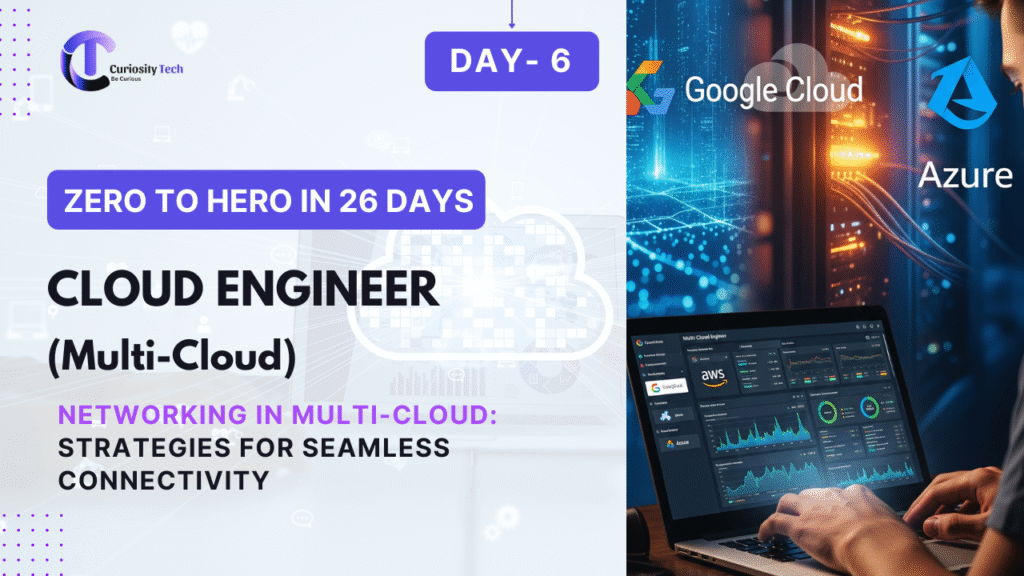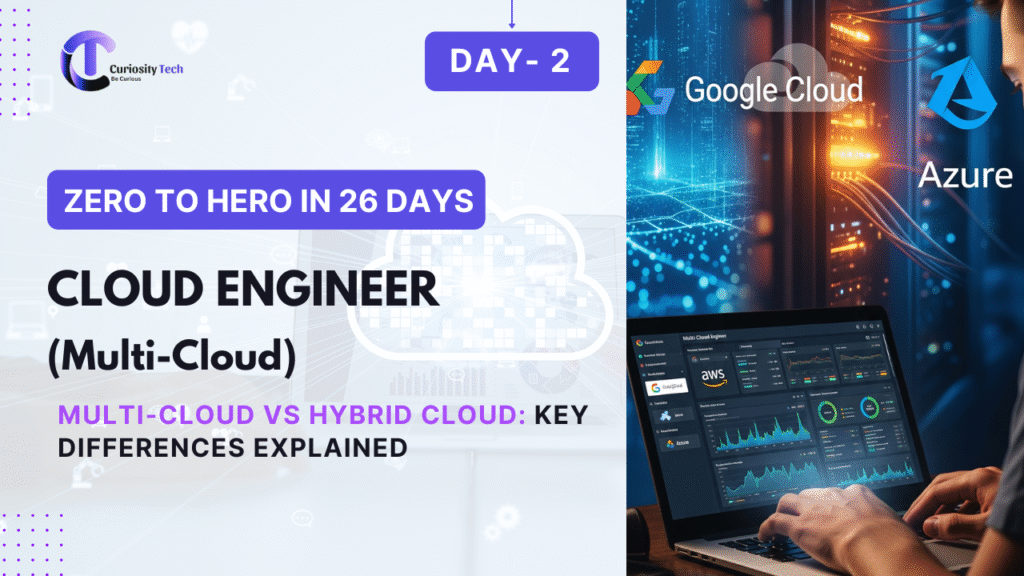Imagine an enterprise with customer apps running on AWS, a data lake on Azure, and AI models hosted in GCP. Customers expect real-time responses, yet the infrastructure spans three different clouds. How do you stitch these pieces together so they behave like one unified system?
This is where multi-cloud networking comes in. With 20 years of working in enterprise networking and cloud projects, I’ve witnessed organizations succeed—and fail—based on how well they design cloud-to-cloud, cloud-to-datacenter, and region-to-region networking strategies.
At CuriosityTech.in, we frequently guide engineers and architects on not just “how to connect” but “how to connect seamlessly with security, performance, and cost in mind.”
Why Multi-Cloud Networking Matters
Data locality: Applications in one cloud often need data in another.
Latency optimization: A global user base requires nearest endpoints.
Vendor lock-in avoidance: Distributing workloads across clouds.
Compliance: Some data must remain in specific regions but still integrate with global apps.
Challenges in Multi-Cloud Networking
Different Terminologies Across Providers
AWS: VPC (Virtual Private Cloud)
Azure: VNet (Virtual Network)
GCP: VPC (but with global scope unlike AWS/Azure regional scope)
Interoperability
Each cloud has its own firewalls, routing models, and security rules.
Security Risks
Misconfigured cross-cloud VPNs or peering can lead to exposed data.
Cost Sprawl
Data egress charges can explode if not optimized.
Core Multi-Cloud Networking Strategies
1. VPN-Based Connectivity
AWS Site-to-Site VPN, Azure VPN Gateway, GCP Cloud VPN.
Useful for initial setups and small-scale integrations.
Downsides: Higher latency, management overhead, not ideal for high throughput.
2. Dedicated Interconnects
AWS Direct Connect, Azure ExpressRoute, Google Cloud Interconnect.
Provide private, low-latency, high-bandwidth connections.
Best for enterprises with predictable traffic and compliance needs.
3. Transit Hubs
Create a centralized hub-and-spoke model where one cloud acts as a transit hub.
Example: Use AWS Transit Gateway to interconnect workloads in AWS, then bridge it to Azure and GCP.
4. Third-Party Multi-Cloud Networking Platforms
Vendors like Cisco ACI, Aviatrix, and Megaport provide a consistent overlay.
Simplifies policy enforcement, visibility, and troubleshooting.
Infographic (Described)
Title: Seamless Multi-Cloud Networking Models
Use Case Story: A Global E-Commerce Company
Let’s take an example:
Frontend Applications: Hosted on AWS in the US for global traffic.
Inventory Databases: Running on Azure for deep enterprise integration.
AI Recommendation Engine: Hosted in GCP to leverage TensorFlow and Vertex AI.
Problem: Customers in Europe face 300ms latency due to cross-cloud communication.
Solution Implemented:
Connected AWS VPC ↔ Azure VNet using ExpressRoute.
Connected Azure ↔ GCP using Partner Interconnect.
Established a multi-cloud transit architecture with Aviatrix to enforce consistent firewall/security policies.
Result: Latency reduced to ~40ms, compliance requirements met, and costs optimized by reducing unnecessary data egress.
Tabular Comparison of Networking Options
Strategy
Best For
Limitations
VPN-Based
Quick setup, testing
Latency, throughput
Direct Connect/ExpressRoute/Interconnect
Enterprise apps, compliance
Higher cost, longer setup
Transit Hubs
Large-scale multi-cloud
Complexity, design overhead
Third-Party Platforms
Unified policy/security
Vendor cost, new learning
Mandatory Elements for Multi-Cloud Networking
DNS & Name Resolution: Unified DNS across clouds.
Load Balancing: Global traffic distribution (AWS Global Accelerator, Azure Front Door, GCP Cloud Load Balancing).
Zero Trust Security: Never trust, always verify—perimeter firewalls are no longer enough.
Monitoring & Observability: Use tools like Datadog or native monitors (CloudWatch, Azure Monitor, Stackdriver).
Becoming an Expert in Multi-Cloud Networking
Based on my career experience, here’s the growth path:
Learn Basics First: Master AWS VPC, Azure VNet, and GCP VPC separately.
Practice Hybrid Networking: Connect a datacenter with one cloud first.
Experiment with VPNs: Hands-on labs connecting AWS ↔ Azure.
Advance to Direct Interconnects: Work on real enterprise designs.
Overlay Solutions: Study multi-cloud networking vendors (Aviatrix certifications are great here).
Security & Monitoring: Focus on encryption, IAM, and real-time observability.
At CuriosityTech.in, we integrate these into practical labs: from setting up a simple VPN tunnel to designing a global multi-cloud backbone architecture.
Conclusion
Networking is the circulatory system of multi-cloud computing. Without seamless connectivity, workloads become silos, users face latency, and enterprises lose agility. The strategies—VPNs, direct connects, transit hubs, and overlays—must be carefully chosen based on cost, compliance, and performance.
The true test of a cloud engineer is not just connecting two systems but ensuring resiliency, scalability, and security across three or more clouds. That’s where learning platforms like CuriosityTech.in stand out—helping engineers turn concepts into architectures that work in the real world.
Day 6 – Networking in Multi-Cloud: Strategies for Seamless Connectivity



